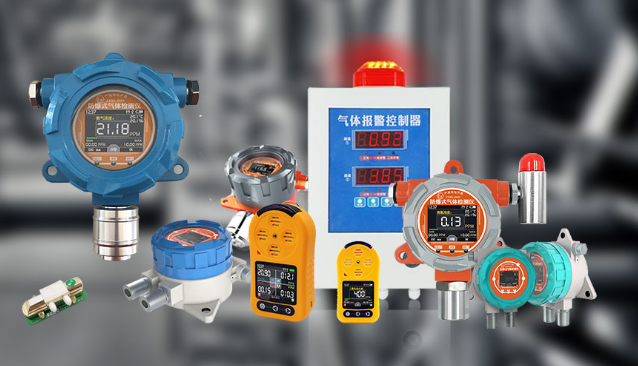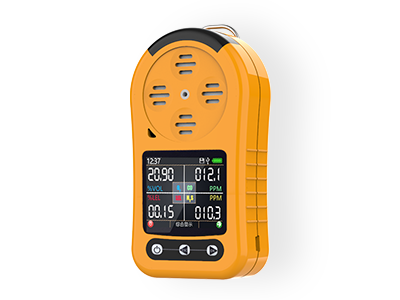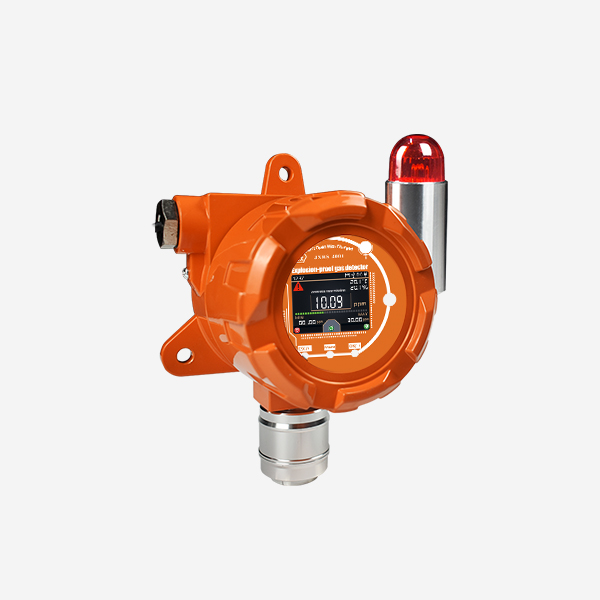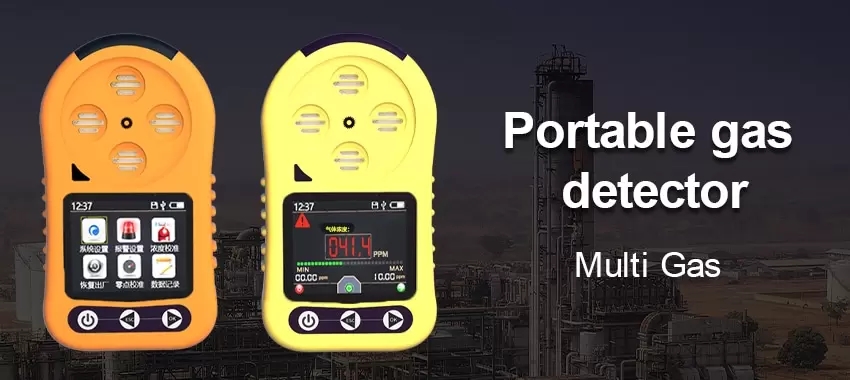
What is a Portable Gas Detector?

Different Kinds of Portable Gas Detectors
In portable gas detectors, we can roughly divide such gas detectors into single gas detectors and multi-gas detectors. The main difference is that a single gas detector can only detect the concentration of one gas, while a multi-gas detector can detect two or more gas concentrations. Next, I will introduce you to the types of portable gas detectors in detail:
1.O3 portable gas detector
The portable ozone detector can detect the ozone concentration in limited space and outdoor environment, and can also be used for space sampling detection after ozone disinfection. The gas to be tested contacts the sensor in an extended manner, and reacts to output a stable electrical signal. The commonly used measurement range is 0~10ppm. The ozone gas concentration value can be accurately displayed on the LCD screen by numbers, with a sound and light alarm function, to avoid the harm caused by the high ozone concentration to the on-site personnel.
Portable ozone detectors are widely used in the pharmaceutical industry, hospitals, food and beverage industry, cold storage, farming and other industries.


2. CO2 protable gas detector
A CO2 detector is an instrument for monitoring carbon dioxide gas. The public awareness of the dangers of indoor carbon dioxide has increased, and portable CO2 gas detectors have become more and more popular. Through the absorption principle of the infrared light source, the carbon dioxide gas in the scene environment is detected, and people are reminded to open the windows for ventilation in time. The measuring range of the Renke portable CO2 gas detector is 0~5000ppm.
Portable carbon dioxide detectors have been widely used in aquaculture, agricultural greenhouses, pharmaceuticals, schools, sewage treatment and other fields, and have become an indispensable protective equipment in industrial safety production.
Hydrogen sulfide is a toxic gas, which can easily poison people and endanger life safety. Therefore, portable H2S gas analyzers are used in many routine chemical plant work. The portable H2S gas detector can detect gas concentration in pipelines or confined spaces, atmospheric environments, and can also detect various gas leaks and the purity of high-concentration single gas. The measuring range of the Renke portable hydrogen sulfide gas detector is 0~10ppm.
Hydrogen sulfide detectors have been widely used in petroleum, chemical, gas transmission and distribution, storage, municipal gas, fire protection, environmental protection, metallurgy, biochemical medicine, energy and power industries.


5. CO protable gas detector
Carbon monoxide is a highly toxic gas, and it is easy to produce. Coal combustion and natural gas leakage will produce carbon monoxide, which can easily lead to poisoning and even death. Therefore, the use of CO gas detectors becomes particularly important. CO portable gas detector is a kind of detection equipment that can continuously monitor carbon monoxide gas. The built-in sensor adopts advanced electrochemical original sensor, which is sensitive in response and high in precision. Its measurement range is 0-1000ppm and 0-2000ppm, which can meet a variety of use environments.
In the production of synthetic ammonia, acetone, phosgene and methanol in the chemical industry, a carbon monoxide gas detector must be equipped. When the car is not turned off in the parking lot, a large amount of toxic and harmful carbon monoxide gas will be produced. Once the sensor detects that the current carbon monoxide content exceeds the standard, it will automatically turn on the ventilation equipment to ensure ventilation and personnel safety in the parking lot.
6.Multi gas detector
The multi gas detector is an instrument and equipment for detecting a variety of gases. When two or more gases need to be monitored in the working environment, a multi-gas detector is required. Usually, the gases detected by multi-gas detectors are mainly CO, H2O, O2, SO2, NH3, CL2, etc. Currently, the most common multi-gas detectors are 2 in 1 gas detectors, 3 in 1 gas detectors, 4 in 1 gas detectors, 5 in 1 gas detectors, 8 in 1 gas detectors, etc. Select the corresponding gas sensor for the actually detected gas and integrate it into an integrated gas detector device.

Conclusion
Whether it is a single gas detector or a multi-gas detector, it is mainly based on the number and types of gas sensors matched with the gas detector. At present, the gas sensor has a two-in-one gas sensor. Due to some special two gases, It is possible to use the same gas sensor for detection, such as oxygen and hydrogen sulfide, carbon monoxide and oxygen, etc. With this type of gas sensor, we can greatly save our detection costs.
 : +86 155 8830 2704
: +86 155 8830 2704 : jxdziot@gmail.com
: jxdziot@gmail.com
